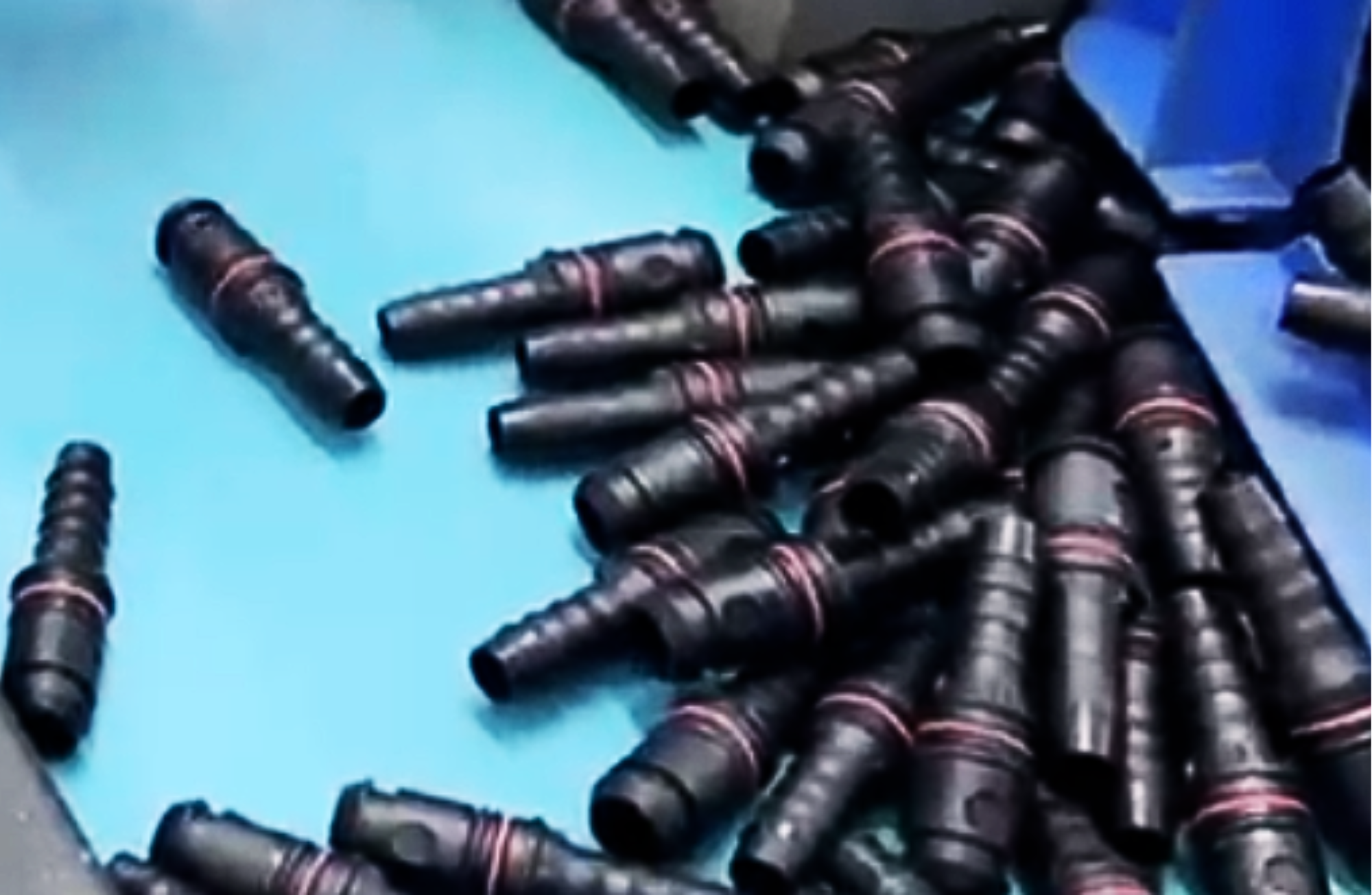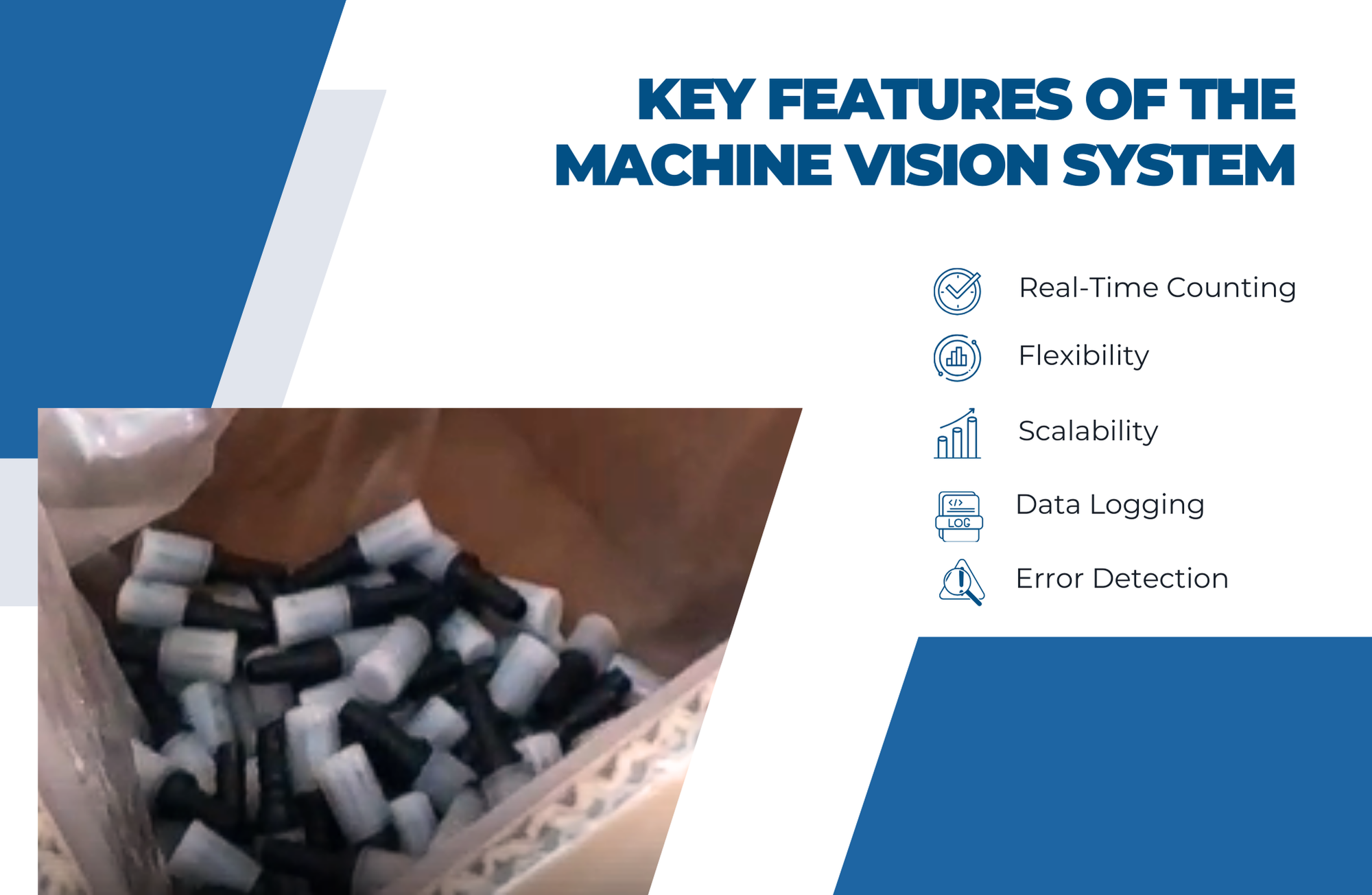Automobile parts connectors counting using AI and camera
Published on: Jan 06, 2025

Written by: Content team, Intelgic
Accurate Counting of Automobile Parts, connectors Using Camera and Computer Vision AI
The automobile industry is heavily reliant on precision and accuracy, especially in the manufacturing of small components such as connectors. Traditionally, manufacturers have employed manual counting methods or estimated quantities based on weight. While these approaches are widely used, they come with significant drawbacks, including inaccuracies, inefficiencies, and the potential for human error. To address these challenges, a machine vision system leveraging computer vision AI offers a robust and scalable solution for accurate counting of parts, regardless of their size or shape.

Challenges in Traditional Counting Methods
-
Manual Counting:
-
Time-intensive and laborious.
-
Prone to human error, especially with large quantities.
-
Inconsistent accuracy.
-
-
Weight-Based Estimation:
-
Assumes uniform weight for all parts, which is often not the case.
-
Susceptible to inaccuracies due to variations in part weight, packaging materials, or contaminants.
-
Cannot provide precise counts, leading to potential disputes or losses.
-
Proposed Solution: Machine Vision System
A machine vision system integrates a camera, conveyor system, and computer vision AI to automate and enhance the counting process. This solution is designed to overcome the limitations of traditional methods while improving efficiency and accuracy.
How the System Works
-
Camera Integration:
-
High-resolution cameras are mounted above or beside the conveyor belt.
-
Cameras capture continuous images or video of parts as they move along the conveyor system.
-
-
Computer Vision Software:
-
Utilizes advanced algorithms to detect, identify, and count individual parts in real-time.
-
Adapts to different part sizes, shapes, and orientations by employing object detection models.
-
Filters out noise and overlapping parts using techniques such as edge detection, segmentation, and pattern recognition.
-
-
Conveyor System Automation:
-
The system stops the conveyor when a pre-defined threshold is reached, such as 100 parts.
-
Allows for seamless integration into existing production lines.
-
Key Features of the Machine Vision System
-
Real-Time Counting:
-
Provides instant and accurate counts, minimizing delays in packaging and shipment.
-
-
Flexibility:
-
Adapts to varying part designs, including irregular shapes and sizes.
-
Configurable thresholds to match specific packaging requirements.
-
-
Scalability:
-
Suitable for small-scale operations as well as high-volume production lines.
-
-
Data Logging:
-
Stores count data for each batch, ensuring traceability and compliance.
-
Provides insights into production efficiency and inventory management.
-
-
Error Detection:
-
Identifies anomalies such as broken or defective parts.
-

Technological Components
-
Hardware:
-
Camera: High-speed industrial cameras with appropriate resolutions.
-
Lighting: Consistent illumination to minimize shadows and reflections.
-
Conveyor System: Adjustable speed for optimal image capture.
-
-
Software:
-
Computer Vision Algorithms:
-
Intelgic's Live Vision software, which includes comprehensive tools for processing video streams and counting items.
-
-
Image Preprocessing Techniques:
-
Tools such as grayscale conversion and thresholding to optimize detection accuracy.
-
-
Integration Tools:
-
APIs for communication with other systems such as ERP or MES.
-
-
Benefits of Adopting Computer Vision AI
-
Accuracy:
-
Eliminates human error and inconsistencies.
-
Provides precise counts for improved customer satisfaction.
-
-
Efficiency:
-
Speeds up the counting and packaging process.
-
Reduces labor costs and reliance on manual intervention.
-
-
Cost Savings:
-
Prevents over- or under-shipment of parts.
-
Minimizes rework and disputes with customers.
-
-
Quality Assurance:
-
Ensures only complete and defect-free parts are shipped.
-
-
Data-Driven Insights:
-
Enables tracking and analysis of production metrics.
-

Implementation Considerations
-
Initial Setup:
-
Conduct a feasibility study to assess compatibility with existing systems.
-
Select appropriate hardware and software components based on part characteristics.
-
-
Training the AI Model:
-
Collect a diverse dataset of part images for training.
-
Continuously update the model to handle new part designs.
-
-
Integration:
-
Ensure seamless communication between the machine vision system and the conveyor control mechanism.
-
-
Maintenance:
-
Regularly calibrate cameras and clean optical components.
-
Monitor software performance and update algorithms as needed.
-
Applications Beyond Connectors
While this system is particularly beneficial for connector manufacturers, it can also be applied to other sectors in the automobile industry, such as:
-
Fastener counting (bolts, nuts, screws).
-
Gasket and seal verification.
-
Electronic component assembly lines.
The adoption of camera and computer vision AI in counting automobile parts is a transformative step for manufacturers. By ensuring accuracy, efficiency, and cost savings, this technology addresses the limitations of traditional methods while paving the way for smarter, data-driven manufacturing practices. As the automotive industry continues to evolve, investing in machine vision systems will be essential for staying competitive and meeting the demands of precision engineering.

